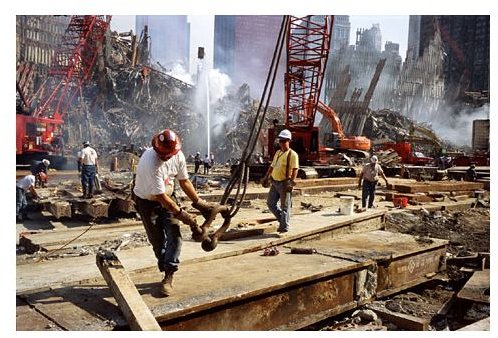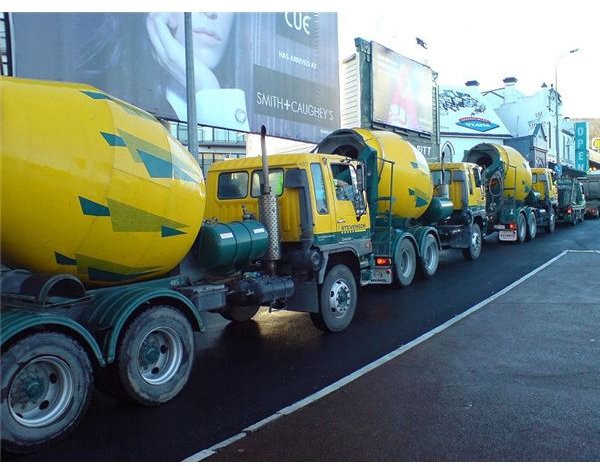Top Ten Most Dangerous Jobs: The Statistics May Surprise You!
Fatality rate, or the ratio of the number of job-related fatalities to the total number of workers employed in the job, is a good indicator on the dangers associated with a job. Another indicator is the index of relative risk, or the ratio of risk of injuries to the job group to the risk of injuries for all workers combined.
1. Commercial Fishing Jobs
The
Bureau of Labor Statistics has listed jobs in commercial fishing such as fishing boat captain, first mate, boatswain and others as the most dangerous occupations in the United States for many years, with a fatality rate of almost 112 for every 100,000 workers employed in 2007. The 2009 annual Census of Fatal Occupational Injuries (CFOI) reports 200 deaths per 100,000 workers among commercial fishers, 60 times the national average.
The risk factors in commercial fishing jobs include:
- strenuous and long hours that cause stress and fatigue
- extremely hazardous working conditions such as inclement weather, risk of being swept overboard by winds and waves, and risk of injuries on slippery decks
- risk of injury from factors such as malfunctioning gear, entanglement in fishing nets and the like, and
- risk of shipwrecks.
Compounding risk factors is isolation, with no access to first aid, relief, or evacuation nearby.
People looking for a career in commercial fishing need to consider the odd working hours and extended stay away from their homes in the ocean, apart from the risk factors.
Image Credit: NOAA Photo Library/William B Folsom
2. Timber Logging Workers
The second most dangerous in the top ten most dangerous jobs are positions in timber logging, with a fatality rate of 86.4 per 100,000 workers in 2007. Timber logging has frequently earned the position of the most dangerous job for many previous years, with fatality rates as high as 118 per 100,000 workers in 2002 and 92.4 per 100,000 workers in 2006. A timber logging worker is around 20.6 times more likely to get injured on the job compared to an average worker. The estimate in 2009 shows a comparative decline in the fatality rate, at 61.8 per 100,000 workers, but timber logging still retains the second spot in the list of most dangerous jobs.
Timber logging jobs are physically demanding and hazardous. The job requires great skill to move logs and branches, very often manually, to use equipment such as chain saws skillfully to fell trees, to skid and load logs into trucks, and similar risky tasks.
The risk factors include:
- deaths or loss of limbs by being crushed under the falling trees, being trapped by the vines, or being trapped in between the rolling logs
- death or injury by encountering slippery ground, quicksand, poisonous plants, insects and snakes, etc., and
- loss of hearing capability owing to working under the constant sound of sawmills and heavy machinery.
Adding to the risk is the extended time spent outdoors in isolation, very often in adverse weather conditions such as extreme heat or extreme cold.
3. Aircraft Pilots and Flight Engineers
Aircraft pilots and flight engineering jobs rank third in the top ten most dangerous jobs, with pilots 19.9 times more likely to have a fatal accident on the job compared to an average worker. The fatality rate of pilots and navigators has declined from 66.7 per 100,000 workers in 2007 to 57.1 per 100,000 workers in 2009.
Flying does not involve much physical effort, but the mental stress of remaining on constant alert and being responsible for a safe flight regardless of the weather is taxing. A pilot also needs to work odd hours.
The job hazards associated with aircraft piloting jobs include:
- ill effects of jet-lag
- prolonged exposure to noise from aircraft engines
- threat of death, injury, or imprisonment from hijacking
- loss of life due to aircraft crashing, especially when working with experimental planes
- exposure to hazardous chemicals for crop-duster pilots, and
- risk of personal injury when engaged in rescue missions, especially for helicopter pilots.
4. Structural Iron and Steel Workers

Structural iron and steel working rank fourth in the list of top ten most dangerous jobs, with a fatality rate of 45.5 per 100,000 employed. These workers are 13.1 more likely to have a fatal accident on the job compared to an average worker.
Structural metal workers work at extreme heights in a variety of weather conditions. The risks include falling from heights and injury from welding.
Image Credit: Wikimedia Commons
5. Farmers and Ranchers
Farmers and ranchers rank fifth in the top ten most dangerous jobs with a fatality rate of 38.4 per 100,000 employed. The index of relative risk is 5.1, meaning farmers are 5.1 times more likely to suffer from work-related injuries compared to an ordinary worker.
The risk factors for farmers come from:
- physically strenuous work, often under inclement weather
- exposure to harmful pesticides
- risk of injury from heavy equipment, and
- risk of fatal bites from pests, and kicks from animals.
Farming demands constant round-the-clock attention, and requires a lot of patience and a love for the rural outdoor life.
6. Roofers
Roofing work ranks sixth in the top ten most risky jobs, with a fatality rate of 29.4 per 100,000 employed. Roofers are 5.9 times more likely to suffer workplace injuries than ordinary workers.
The risk in roofing jobs comes from:
- slipping and falling from scaffolds, ladders, or roofs
- heat-related injuries such as burns and dehydration during summer
- fall from high elevations, and
- risk of injury due to slippages when lifting heavy objects, as well as when climbing, bending, and kneeling.
Roofers generally do not work during winters or rainy season, making it a good profession for those who prefer an extended break.
7. Power-line Workers
Power-line workers, which include electrical power line installers and repairers, have a fatality rate of 29.1 per 100,000 employed, making it the seventh of the top ten most dangerous jobs. Power line workers are 5.7 times more likely to suffer work-related injuries compared to the average worker.
The major risk for power-line workers are:
- electrocution from high-voltage power lines
- severe injury owing to fall from elevated electrical poles
- injury from lifting equipment and working in a variety of positions, such as stooping or kneeling, and
- exposure to inclement weather.
8. Truck Drivers

Truck drivers, with an occupational fatality rate of 26.2 per 100,000 employed, ranks eighth in the list of top ten most dangerous jobs. Their index or relative risk, or the number of times they are more likely to face work-related injury compared to an average worker, is 5.3
The risks for truck drivers include:
- accidents and thefts when on the road for long stretches of time at all hours of the day and night
- injury when unloading and loading heavy cargo, and
- exposure when carrying hazardous materials.
Truck drivers face extended time out on the road at places far away from home and odd working hours.
Image Credit: Wikimedia Commons
9. Garbage Collectors
Garbage collectors, recyclers and sanitation workers were not in the list of top ten most dangerous jobs published by the Bureau of Labor Statistics in 2002 but have since then found a prominent place in the list. Such professions have a fatality rate of 22.8 per 100,000 employed.
The major risks of such jobs are:
- exposure to hazardous wastes harmful fumes, materials, and chemicals
- increased risk of traffic-related accidents
- working with dangerous machinery, and
- risk of injury when picking up waste.
A good knowledge of scientific waste collection and processing and a penchant for identifying dangerous wastes are essential requirements to succeed in such risky jobs.
10. Police and Sheriff’s Patrol Officers
Careers in the police are another new entry in the list of top ten most dangerous occupations in the United States. Police and sheriff patrols officers have a fatality rate of 21.4 per 100,000 employed. The danger obviously stems from confronting criminals as part of their daily routine. The job mandates strenuous physical activity, courage, and firmness when handling law-breakers and at the same time requires patience and restraint to maintain control over tense situations.
Other Professions
Two professions that found a place in the top ten most dangerous jobs in the past, but have since then slipped down are taxi drivers, at risk of accidents and homicide, and construction workers, at risk of fall-related injuries, exposure to harmful material, and work-related injuries.
Coal miners and astronauts are two of the most dangerous professions, but do not figure in the list of top ten most dangerous professions.
A common thread that runs through all the above dangerous jobs are that all these jobs are outdoors jobs, and workers very often function at the mercy of the nature.
References
- Bureau of Labor Statistics Compensation and Working Conditions. Dangerous Jobs.https://www.bls.gov/iif/oshwc/cfar0020.pdf
- Bureau of Labor Statistics. Number of Fatal Work Injuries (1992-2008) https://www.bls.gov/iif/oshwc/cfoi/cfch0007.pdf
- Boston and Monster. Americans 10 Most Dangerous Jobs. https://www.boston.com/jobs/galleries/dangerous_jobs_2007/
- Kirdahy, Matt. America’s Most Dangerous Jobs. https://www.forbes.com/2008/08/25/dangerous-jobs-fishing-lead-careers-cx_mk_0825danger.html
